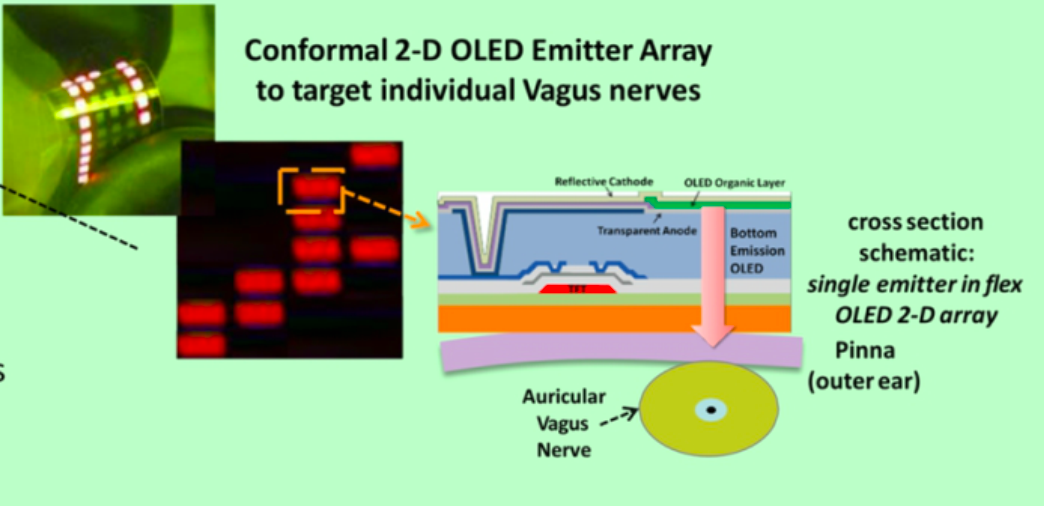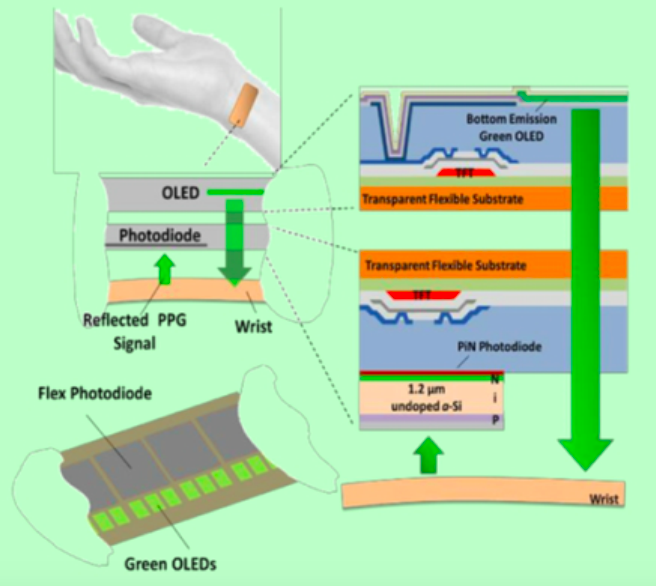If you have ever wonder what the future may hold for OLED display technology, particularly beyond the display industry, look no further than the “OLEDs: Recent Advances and Applications” talk (M-03) given this past May at a (very) early morning session at Display Week 2016. In it, Dr Jian Li of Arizona State University (ASU) covered the specifics of maximizing high light extraction efficiency from inside OLEDs, at a reasonable cost, with particular applications beyond displays, targeting bio sensors.

In the session, the ASU professor showed how their early work includes developing point of care OLED sensors to diagnose multiple disease and detection pathologies, creating wearable PPG’s (photoplethysomograph) sensors used in precision cardiac monitoring, and creating OLED-based ontogenetic nerve stimulators using a microelectrode array (MRE) for treating both inflammatory and mental health disorders.
For example, Li described the remarkable work being done at ASU on a non-invasive bio-photopic alternative to conventional prescription drug-based treatments. A typical application uses a trans cutaneous (through the skin) vagus nerve ontogenetic stimulator (using light to control bio cells). In this case, the light is targeted at red-shift Opsin Crimson (light sensitive proteins) to treat inflammatory disease and mental health disorders. Here the team used a conformal OLED 2D emitter array that can target individual vagus nerves in the human outer ear. We found an example of the foundational bio-approach on-line at the National Institute of Health.

Li shows other applications of OLEDs being used to excite or inhibit neural activity in specifically (genetically) modified neural tissue. The approach goes beyond the conventional method that requires a fiber optic cable inserted into the bran of the subject (ouch!) It also eliminates exposure of the surrounding neural tissue to the light, according to Li.
To achieve precision cardiac monitoring, the ASU research team showed how skin-illuminated light absorption of arterial blood was measured, using a PPG waveform captured by monitoring light reflection as a function of time. A key advantage to OLED technology is that the intensity of the PPG signal detection is strongly position dependent, so creating a multi sensor flexible array system from the wearable OLED sensors “can provide more robust PPG signal capture than conventional single emitter applications,” according to the Li presentation.


So here is yet another Display Week gem buried in the dust of time – resurrected now for our edification. As we enter the age of sensors, we may find the immense effort formerly made in efficient light creation and management for display purposes having a ripple effect in unintended consequences that move and improve the human condition beyond our wildest hopes and dreams.
And in case you missed it, the SID Display Week staff make it fundamentally more easy to access this (and just about any other) gems presented at Display Week with the recent emailing of their SID Display Week Event Scribe a web application that brings to life the proceedings of that recent landmark display event. —Steve Sechrist

